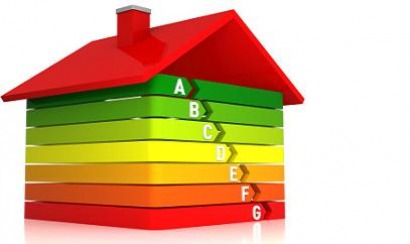SPAIN Chaos is rampant at most of the Autonomous Regional authorities because they haven't yet got a registry together, in which to register their region's energy certificates, the need for which comes into effect tomorrow, June 1. The exceptions are Andalucía, Balearics and Castilla y León. If you want to sell or let your home, you will need one. If you're building a new home, energy efficiency must be in the upper region of certification (A, B or C). But what is it, and how do you get one? The answers are below in Q&A form.>>>
What is an Energy Efficiency Certificate (Certificado de Eficiencia Energética) for a building?
It is the process whereby the efficiency of the energy used in a home or building, including commercial property, is measured according to a set of calculations, aimed at issuing a certificate of energy efficiency which shows the values on a sliding scale of factors that include how much energy (i.e. electricity, heating, cooling, water usage, etc.) the building uses, as well as the amount of CO2 it emits. It applies to all buildings (apartments, single family homes, villas, commercial property, etc.) except those that are listed as monumentos históricos, or similar.
What factors are taken into account?
The overall energy efficiency of the building. These might include such items as double glazing, roof and wall composition, etc. etc.
Energy delivery systems, such as the efficiency of a fridge, air conditioning units, heating systems, fireplaces, log burners, etc.
Why is it so important to obtain one?
- Because Royal Decree 235/2013, of 5 April says that if you want to sell your home (apartment, villa, and anything else), or rent it out, its energy efficiency must be contained in a registry run by your Autonomous Region.
- Prospective buyers and/or tenants must be notified of the certification and the building's qualifications.
- The certificate will be a form of comparison, competing with other properties on the same level.
- Added value, to be taken into consideration when making purchase or rental decision.
- Buildings with higher marks will fetch a higher price.
- A certificate for the whole building will avoid disparity of criteria.
- Energy savings: if proposed (but not obligatory) improvements are made, they will ensure savings on bills.
What information must the certificate contain?
- Identification of the building.
- Information that the survey has been carried out according to established rules.
- Information of the laws on energy efficiency and savings as applied at the time of building.
- Qualification of the building as expressed by the Energy Efficiency label (See image above)
- Aside from the global efficiency qualification, partial qualifications must be included for: heating, cooling, hot water production and, in tertiary sectors (i.e. service industries), lighting.
- It must include a document containing a list with a sufficient number of energy savings measures, as recommended by the person carrying out the survey.
Who pays for it?
The property owner wishing to sell or rent. Prices average about €250, but depend on such things as size of building, its location, etc. The Internet is full of companies offering certificates (See 'Where can I get a certificate' below) and many of them offer an online guide to prices in your area. Google Certificado Energético, and they'll appear. Almost all the companies operate out of large cities. We would recommend using a local architect if you live outside large cities, but check prices first.
How long does the certification last?
It will last for 10 years, after which it needs to be renewed for the property to be sold or rented.
Am I obliged to carry out improvements if certification is at the low end (D, E or F)?
No, it is not obligatory, but improvements are recommended in order to get better energy efficiency and a higher price.
Where and how can I get a certificate?
The law states that they should be available through certified technicians in possession of the diploma that says they are. However, the best idea is to consult a local architect (arquitecto) or surveyor (aparejador or arquitecto técnico).
Who does the actual registration?
Once the certificate is obtained, it is up to the property owner to have it registered, though there may be surveyors or companies willing to do it for them.
What happens if I don't obtain a certificate?
- Fines range from €300 to €3,000 under the following circumstances:
- The sales or rental contract can be declared null and void if the buiyer or tenant has not been informed correctly on the subject. Notaries are known to be on the lookout.
- The seller/renter may have to compensate or idemnify the buyer/tenant for damages resulting from not having been given correct information.
Is a visit to the property necessary?
Yes, it is necessary to take measurements and data of the building, and later to create and issue the report and certificate.
(Further information is available from TranslationHELP. See banner ads on CampoPulse)




No comments:
Post a Comment
Thank you for taking the time to comment. It will be published as soon as it is moderated and/or edited.